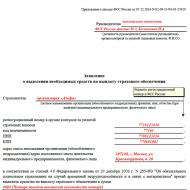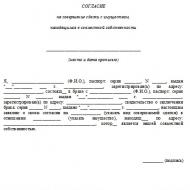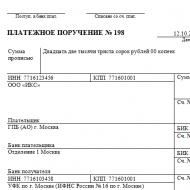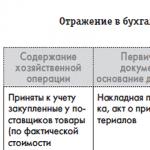
Stocks, bonds and other securities. What is the difference between a stock and a bond? Stocks and bods market
Securities and their types. Stock. Par value of the stock price. Bonds. Stock market. Primary and secondary market. Organized and unorganized market. Stock exchange and its functions. Capital accumulation. Intersectoral capital flows. Stock speculation.The meaning of the stock market. Securities
The practice of your life, your first acquaintance with economics, introduced you to the concept of “security”.
In this chapter we will get acquainted with securities in detail. Your parents receive a certain income. Part of this income goes to organizing the life of the family: food, education, clothing, housing, etc. Parents try to save the other part of the income. Some take money to the bank and put it on deposit, others purchase securities. Money deposited in the bank will bring profit in the form of interest. Each security, subject to the normal development of the economy and the enterprise or organization whose securities were purchased, must bring an annual cash income in the form of dividend or interest.
Types of securities
The main types of securities are shares, bonds, bills, checks, and savings (deposit) certificates.A share is a security that certifies the contribution by its holder (shareholder) of capital to a joint-stock company and the shareholder’s right to receive part of the company’s profit in the form of a dividend or part of the property in the event of its liquidation. Each share owner is a partial owner of the capital of this company, in the amount of his block of shares, which gives the share owner the right to participate in the management of the company and receive complete information about her activities.
Shares are divided into ordinary and preferred, registered and bearer.
An ordinary share gives its owner the right to take part in management and express his approval or objection to the issues discussed at the general meeting of shareholders by voting.
Ordinary shares do not entitle their owners to receive dividends in a fixed amount and on a priority basis. The owners of these shares are paid dividends in the form of a percentage depending on the amount of the remaining profit after paying a fixed percentage to the owners preferred shares.
Preference shares. Based on the Law of the Russian Federation “On Joint Stock Companies”, it provides their owners with the following privileges:
. dividends on preferred shares are paid in a fixed, guaranteed amount;
. upon liquidation of the company, the owners of these shares have priority to receive the remainder of the property.
Unlike ordinary shares The Law of the Russian Federation “On Joint-Stock Companies” grants owners of preferred shares the right to vote in the following cases:
. when resolving issues of reorganization and liquidation of the company;
. when deciding on amendments and additions to the company's charter that limit the rights of owners of preferred shares. Such issues, for example, include determining and changing dividends on preferred shares;
. when resolving a number of other issues in accordance with the law and the charter of the company and a number of other issues.
It should be noted that when deciding on issues of determining the amount of dividends and reorganizing a joint stock company, decisions can be made only if more than 70% of the holders of ordinary shares present at the meeting and more than 70% of the holders of preferred shares vote for them.
Registered share differs from others in that the name of its owner is recorded on the form of the share or in the register of shareholders.
Bearer share - where the name of its owner is not indicated, its circulation does not require special registration. An anonymous shareholder is recognized from a legal point of view as a full-fledged shareholder, however, dividends on bearer shares must be requested individually by tearing off and presenting the coupon attached to the shareholder certificate.
A bond is a security that certifies that its owner has made a cash, and confirming the obligation of the issuer of this paper to reimburse the face value of the bond and the fixed interest within the established period.
The difference between a stock and a bond is that the owner of the stock is one of the owners of the enterprise, taking on the risk of its activities. On the contrary, the owner of the bond is only a creditor of the enterprise who has the right to demand repayment of the debt.
Depending on the issuer (the person who issued the bond), bonds are divided into:
. government;
. Bank of Russia;
. municipal;
. enterprises;
. foreign.
Depending on the maturity date, bonds are divided into:
. short-term;
. mid-term;
. long-term;
. unlimited
The time frames that determine whether bonds belong to one group or another are different for each country and are determined by local legislation and established practice. Typically, short-term bonds are considered to be bonds with a maturity of up to 3 years. Medium-term bonds include bonds that will be repaid in 7-10 years. Accordingly, bonds with a maturity of over 10 years are considered long-term. Concerning perpetual bonds, then they have no advance deadline repayment. Investors purchase such bonds in anticipation of periodic interest income paid on them.
According to the form of existence, bonds are divided into:
. documentary - which exist in paper form and are handed out;
. undocumented - exist in the form of entries in special accounts.
Depending on the order of ownership, bonds can be:
. registered, the ownership rights of which are confirmed by entering the owner’s name in the text of the bond and in the registration book maintained by the issuer;
. to bearer, ownership of which is confirmed by simple presentation of the bond.
According to the method of payment of income, bonds are divided into:
. interest (coupon);
. discount (with zero coupon).
Owners of interest-bearing bonds are reimbursed the nominal value of the bonds and interest in the form of coupon income.
A coupon is a cut-out coupon with the interest rate indicated on it.
No interest is paid on discount bonds; they are repaid at par, but such bonds are purchased at a price below par, that is, at a discount (discount). The difference between the redemption price and the purchase price of the bond is the investor's return.
Stock market
Securities are bought and sold on stock markets.
The primary market is the market in which newly issued securities are traded. Its main participants are issuers who need financial resources and for this purpose they issue securities for sale. The second character on stock market- these are investors who have money and are looking for the most profitable application for their financial capital. Thus, investors looking for an application for their financial capital create demand for securities, and issuers in need of financial resources issue securities into circulation, i.e., determine their supply.
The placement of securities on the primary market occurs either through their direct sale to investors or through intermediaries. These are usually investment banks. In this case, banks can act as agents, receiving commissions for their services. More often, however, banks buy up the entire issue of securities, and then trade them on their own behalf.
In Russia, a mandatory condition for the placement of securities is registration of their issue. If securities are placed by open subscription (sale to everyone), then it is also necessary to register the issue prospectus. The latter contains data about the issuer, its financial position, the number of issued securities, the issue procedure and other necessary for investors information.
Secondary stock market - where the resale of securities previously issued for circulation occurs, i.e., securities are transferred from one business entity to another, but such movement of shares does not affect the size of investments in the economy, since new or additional investments do not occur.
On secondary market The main characters are speculators. They strive to buy securities at the moment when their prices fall to the lowest possible, and sell when there will be an increase prices to the maximum possible. The difference between the buying and selling prices is the income of speculators. Movement in the prices of securities occurs when a company operates inefficiently and speculators begin to get rid of its securities, the price falls. On the contrary, as the efficiency of the enterprise increases, the demand for securities increases, and accordingly, the price. Thus, the situation in the secondary market shows which enterprises and industries are experiencing a crisis, and which, on the contrary, are on the rise. Thus, the secondary market gives signals to investors about promising directions for future capital investments, which affects the outflow of capital from some industries (where there is a decrease in profits and, accordingly, dividends) and increases the flow of money into industries where progress is planned. The described options for the movement of capital ensure structural restructuring of the economy. The secondary market is also an indicator of the state of the economy as a whole: on the eve of a recession, securities (primarily shares) usually become cheaper.
The stock market exists in two main organizational forms: in the form of exchange and over-the-counter markets. In the first case, securities are sold on stock exchanges.
Hello, dear blog readers!
Today we will talk about a fairly well-known type of income. It's about about stocks and bonds. I know that Yuri talked a little about them earlier, but today I would like to go deeper.
Securities - stocks and bonds
I want to warn you right away, the article is NOT designed to fill your head with new terms so that you can tell something to another person, but so that you yourself understand what it is and what it is eaten with. I will try to explain all this in such a way that even a child who does not understand anything about money, companies and business can understand. So, let's go!
Shares on the securities market
These are securities that state that the owner of this security is also the owner of some percentage of the company. Simply put, a share is a part of a company.
You ask, what is the benefit of selling people part of your business!? And I will answer briefly and clearly. We have to get money for development from somewhere! But then the company forever (or until resale) loses its piece! But I also have an answer to this argument. Their further value significantly exceeds the cost of the sold part. The difference is so great that for a highly developed company these figures are almost unnoticeable
Bonds on the securities market
- these are also securities that state that the owner is a creditor of the company and the owner of a part of its profits. Those. to those who sponsor its development.
What is the difference between stocks and bonds? The point is that when a company goes bankrupt, the bond owner gets paid every last penny he invested, but the stock owner gets paid nothing.
You say, “It’s more profitable to buy bonds rather than stocks!” But I'm ready to argue with you. While bond holders receive a fixed return, stock holders have an unknown return. It can be several times higher than the fixed profit of bondholders, but it can also be several times less. Depending on the company's income.
I would like to note that most often people - more than 90% - purchase both shares and bonds not individually, but in hundreds, thousands! After all, each such agreement provides very small percentage firms: 0.00001%-0.1%. And then, with a tenth of a percent, I probably took a lot.
Let's look at an example.
You - a common person, bought a block of shares in a certain company. For example, IKEA. And after 6 months, her income increased by 340%. Consequently, your profit has increased by a certain amount of percent.
The cost of one share is 200 rubles.
The part of the company that provides this share is 0.00001%.
The cost of a thousand shares is 200 rubles * 1000 = 200,000 rubles.
Percentage of acquired company - 0.00001* 1000=0.01%
The profit of the entire company is 900,000 rubles/month.
Your profit is 900,000 rubles * 0.01 = 9000 rubles / month.
At first glance, not so large sum. But let's count! If it so happens that the company has become very popular, for example, like IKEA, EPICENTER or MTS, which are in great demand, then your net profit will become incredibly tall! Up to several million a month, considering that you spent only a few hundred thousand on such a business. I don’t know about you, but I would be pleased.
With bonds everything is simpler. You bought them, it says how much interest you will receive monthly, quarterly or annually. If the company goes bankrupt, everything is returned to you. No risks, no loss of funds. Only stability and reliability.
So, if you are a gambling person, a person without fear, or a person with a very large amount of money who wants (quite likely temporary) income, buy stocks, otherwise, bonds.
Let's sum it up
Should you buy shares?
Pros:
- this is ALREADY part of the company that no one can take away from you
- Incredibly huge profits are possible with minimal investment
- the opportunity to take part in the board of directors once a year to elect managers for one or another part of the company
Minuses:
- It is very risky to buy because... You can lose everything you have acquired.
- you need to purchase a significant portion of the shares to make a significant profit.
Should you buy bonds?
Pros:
- fixed profit (does not decrease)
- in case of bankruptcy, you will be reimbursed for all the money you invested
Minuses:
- you need to pay a certain amount of money within a certain period of time
- bondholders do NOT own part of the company, only part of their profits.
What conclusions can be drawn from all this? If you have a good understanding of businesses and the economy in general, it is more profitable for you to buy part of the company. If the situation in the country, region, or city is unstable (unstable exchange rates, migration of people, changing demands for goods or services), then buy bonds out of harm’s way.
Also, to consolidate and summarize the information, I suggest watching a short video.
I hope you have gained enough information and understood it. If you still don’t understand anything, don’t hesitate to ask questions in the comments! I'll be happy to explain it to you.
Good luck and all the best!
Sincerely, .
“The investor’s task is to acquire a share of the company at a reasonable price,
whose activities are clear and whose income will increase significantly in 5-20 years"
Warren Buffett
The accumulation of monetary capital plays an important role in a market economy. The process of accumulation of monetary capital itself is immediately preceded by the stage of its production. After money capital has been created or produced, it must be divided into the part that is again sent to production, and the part that is temporarily released. The latter, as a rule, represents the consolidated funds of enterprises and corporations, accumulated in the loan capital market by financial institutions and the securities market.
The emergence and circulation of capital represented in securities is closely related to the functioning of the market for real assets, i.e. market in which buying and selling takes place material resources. With the advent of securities (stock assets), a kind of bifurcation of capital occurs. On the one hand, there is real capital, represented by production assets, on the other hand, it is reflected in securities.
The emergence of this type of capital is associated with the development of the need to attract increasing amounts of credit resources due to the complication and expansion of commercial and industrial activities. Thus, the stock market historically begins to develop on the basis of loan capital, because the purchase of securities means nothing more than the transfer of part of the monetary capital for a loan.
The key task that the securities market must perform is, first of all, to provide conditions for attracting investment to enterprises, access of these enterprises to cheaper, compared to bank loans capital.
The stock market is an institution or mechanism that brings together buyers (demand providers) and sellers (suppliers) of stock values, i.e. valuable papers.
The concepts of the stock market and the securities market coincide.
According to the definition, the goods traded on this market are securities, which, in turn, determine the composition of participants in this market, its location, operating procedure, regulatory rules, etc.
Any stock market consists of the following components:
Market subjects;
The market itself (exchange, over-the-counter stock markets);
Organs government regulation and supervision (Securities Commission, central bank, Ministry of Finance, etc.);
Self-regulatory organizations (associations professional participants securities market that perform certain regulatory functions, for example, NASD (USA), etc.);
Market infrastructure.
Bonds- debt obligations of joint-stock companies, usually issued in large quantities. They are evidence that the company that issued them is a debtor and undertakes to pay interest on it to the owner of the bond for a certain time, and upon the maturity of the payment, to repay its debt to the owner of the bond. In either case, the bond represents debt, and the holder is a creditor (but not a co-owner like a shareholder).
By Russian legislation promotion- an issue-grade security that secures the rights of its owner (shareholder) to receive part of the profit of the joint-stock company in the form of dividends, to participate in the management of the joint-stock company and to part of the property remaining after its liquidation. Bill of exchange is a type of written debt obligation drawer to unconditionally pay at a certain place the amount specified in the bill to its owner (the holder of the bill) upon the maturity of the payment or upon its presentation. By check A security is recognized that contains an unconditional order from the drawer to the bank to pay the amount specified in it to the check holder. The payer of a check can only be a bank where the drawer has funds that he has the right to dispose of by issuing checks. In this case, withdrawal of a check before the expiration of the period for its presentation is not allowed. It should be noted that the issuance of a check does not clear monetary obligation debtor, in pursuance of which he is forced to issue a check. Deposit and savings certificates - this is any document, the right of claim for which can be assigned by one person to another, at the same time being an obligation of the bank to pay off deposits placed with it.
Stock market - market financial instruments, where on the one hand, companies that require additional funds for further development interact for mutual benefit, and on the other, owners of free capital who want to invest them profitably. Thus, the purpose of the stock market is the effective redistribution of capital between various sectors of the economy.
In the article you will learn the basic concepts: stock exchange, stocks and bonds, where to start getting acquainted with the stock market.
The exchange is the main link of the stock market
The basis of the stock market is the stock exchange. This is a special platform where trading takes place. The history of stock exchanges goes back 8 centuries. Securities as such first appeared in the 13th century. The initiators of their placement on the market were the owners of a Swedish company, which was one of the three leading copper producers. The successful experiment inspired other companies to take a similar step, thanks to which a real boom in the issuance of securities began in Europe.Naturally, with this development of events, an urgent need arose very soon for regulators who would deal with issues stock trading and supervised the then still spontaneous market.
This is how stock exchanges appeared. The first special venues opened at the beginning of the 16th century in Lyon and Atverton, and by the end of the century there were already about a hundred similar establishments around the world. The most active participants in the process were states and large joint-stock companies: the Dutch, East India, Baltic, Lebanese and Moscow trading companies.
The oldest share to date was issued in 1601, and its issuer was the then powerful Dutch trade company, which had branches all over the world.
However, until the beginning of the 19th century, stock exchange activity was chaotic - it was treated like a game of roulette, guided more by inner instinct and relying on luck. The situation was radically changed by the publication of a book by the famous stock exchange player Benjamin Graham. It was called “Security Analysis”, on its pages the author suggested giving preference to mathematics and strict analysis, using specially calculated coefficients and indicators.

As a result, the stock market began to develop as a full-fledged organism, existing according to certain laws, understandable and transparent. At the same time, thanks to progress, the technical base began to improve, and it became possible to participate in auctions remotely, first by telephone, and then via the Internet.
The five largest trading platforms in the world today are as follows:
- NYSE– New York Stock Exchange or New York stock Exchange, the largest non-profit exchange platform, membership alone costs $3 million. Founded in 1792;
- NASDAQ or the National Association of Securities Dealers Automated Quotation is also an American exchange specializing in companies that work with high technology and produce electronics, all kinds of gadgets, software and so on.;
- Tokyo Stock Exchange– Tokyo Stock Exchange, on which 2.3 thousand securities of Japanese companies are traded, as well as assets of foreign issuers;
- London Stock Exchange(LSE) – London Stock Exchange, the oldest stock exchange in the world, opened in 1570. It accounts for 50% of all international stock trading, and the annual trading volume is about $2,300 billion;
- Shanghai Exchange- the largest trading platform Asia, founded in 1990.
Main characters
The stock market itself is just a platform on which the main players operate. These include:- issuers – bring their securities to the market;
- investors – acquire the assets of issuers;
- professional players - dealers, brokers and some others.
 Professionals in in this case represent a special group of individuals and companies whose activities are limited to performing intermediary functions. Their main role is to provide investors and issuers with access to the resources of the exchange. For their work, they receive a certain monetary reward in the form of a percentage of concluded transactions, fixed fees, etc.
Professionals in in this case represent a special group of individuals and companies whose activities are limited to performing intermediary functions. Their main role is to provide investors and issuers with access to the resources of the exchange. For their work, they receive a certain monetary reward in the form of a percentage of concluded transactions, fixed fees, etc.Becoming a broker or dealer is not easy. In Russia, for this you need to obtain a license from a special structural unit Bank of Russia. Applicants for a license are subject to an impressive list of serious requirements, and the slightest violation committed by a broker or dealer in the process of work can lead to the cancellation of permits. In other countries, there are also government supervisory and regulatory bodies that seriously monitor the activities of both the exchanges themselves and brokers.
Such a system of stock market regulation guarantees a serious level of security, which is of great importance for private investors. Today, the securities market is considered the most reliable and stable structure of the world economy. According to experts, the risk of being deceived on the food market is several times higher than the risk of meeting a fraudster on the stock exchange.
Basic stock market instruments
Stock market players work with so-called financial instruments. This term refers to various assets that are sold and bought by participants in exchange trading.The main instrument of the stock market are securities. They are also classified into groups according to many criteria, but the most commonly used are stocks and bonds, which are considered classics of stock trading.
Share are called securities, the holder of which receives the right to part of the profit of the issuing enterprise, as well as to part of its property in the event of liquidation of the company. In addition, the owner of shares can participate in the management process of the enterprise. In essence, the buyer of the shares becomes a co-owner of the business.
 Shares are divided into ordinary and preferred. In the first case, income on securities (dividends) is determined based on financial results economic activity enterprises. First the board of directors, and then general meeting shareholders decide whether to pay dividends this year (half year, quarter) and in what amount. Owners of preferred shares receive a guaranteed income, the amount of which is agreed upon by the issuer in advance. There is also a distinction between registered shares and bearer securities.
Shares are divided into ordinary and preferred. In the first case, income on securities (dividends) is determined based on financial results economic activity enterprises. First the board of directors, and then general meeting shareholders decide whether to pay dividends this year (half year, quarter) and in what amount. Owners of preferred shares receive a guaranteed income, the amount of which is agreed upon by the issuer in advance. There is also a distinction between registered shares and bearer securities.Bond is a debt security, the issuer of which agrees to pay the holder after a specified period full price asset, and also pay additional income, that is, a coupon, every six months or every quarter. The coupon value is set as a percentage relative to nominal value asset. This type securities are also classified according to several criteria:
- by issuer: corporate, municipal, state;
- by type of income: coupon and discount, that is, with and without fixed income, respectively, as well as with a floating interest rate;
- by convertibility: convertible and non-convertible.
 A bond is a fixed-term asset, meaning it is valid only for a certain period. In this case, the income of the bond holder is known in advance and is determined based on the par value of the security. It is a fixed value, which fundamentally distinguishes a bond from a stock, which can either enrich the investor or completely devalue his investment. At the same time, bonds, unlike bank deposits are also a traded instrument, i.e. the owner of the debt can sell it to another market participant. Therefore, bond prices also change, but usually not as much as stocks.
A bond is a fixed-term asset, meaning it is valid only for a certain period. In this case, the income of the bond holder is known in advance and is determined based on the par value of the security. It is a fixed value, which fundamentally distinguishes a bond from a stock, which can either enrich the investor or completely devalue his investment. At the same time, bonds, unlike bank deposits are also a traded instrument, i.e. the owner of the debt can sell it to another market participant. Therefore, bond prices also change, but usually not as much as stocks.A separate type of stock market instruments – commodity assets. These are real physical goods, such as oil, gold, copper, cotton, wheat, etc. Only participants in exchange trading purchase them not as raw materials, but as financial asset. The fact is that the price of goods is constantly rising, so purchasing them allows you to protect the money spent from depreciation. And in order to save themselves from the need to worry about storing the purchased goods, investors use so-called settlement contracts, for example, futures and options.
Another interesting tool, the essence of which is not always clear to beginners, is stock indices. They are a composite indicator calculated on the basis of the so-called “index basket”, that is, the total value of securities of a certain category.
Since a stock index is not a security in the traditional sense of the term, it does not have such an indicator as price. In relation to this type of financial instrument, we usually talk about the level or value of the index.
Today there are many different stock indices. In principle, each stock exchange has its own index, but among them there are undisputed leaders, whose behavior indirectly affects the state of the entire stock market.
 So, for America this is the famous Dow Jones index with a long history, which includes shares of all sectors of the US economy, with the exception of transport and utilities, the most used index is the S&P 500, consisting of 500 stocks largest companies USA, no less significant NASDAQ, calculated on the basis of securities of high-tech companies. For European exchanges this is Euro Stoxx 50, the basket of which includes “ blue chips» enterprises from 12 leading countries of the Eurozone. In Asia, the decisive one is the Nikkei, calculated based on the results of trading on the Tokyo Stock Exchange. The state of the Russian stock market is also determined by the MICEX. They are practically equivalent to each other in composition, only the MICEX is calculated in rubles, and the RTS in dollar equivalent.
So, for America this is the famous Dow Jones index with a long history, which includes shares of all sectors of the US economy, with the exception of transport and utilities, the most used index is the S&P 500, consisting of 500 stocks largest companies USA, no less significant NASDAQ, calculated on the basis of securities of high-tech companies. For European exchanges this is Euro Stoxx 50, the basket of which includes “ blue chips» enterprises from 12 leading countries of the Eurozone. In Asia, the decisive one is the Nikkei, calculated based on the results of trading on the Tokyo Stock Exchange. The state of the Russian stock market is also determined by the MICEX. They are practically equivalent to each other in composition, only the MICEX is calculated in rubles, and the RTS in dollar equivalent.In addition to country indices, there are also indices of individual industries and more complex composite indices.
Stocks and bonds, as well as indices, are the main classic ones - this is where you should start getting acquainted with the stock market.
Buy shares online
With the help of our partners, you can open a regular brokerage account or right now buy stocks online without leaving your home. This is suitable for those who still find it difficult to choose a broker and the nuances of opening an account. Or he's just afraid of making a mistake. Our partner is Finam - this is the largest broker and bank in Russia. You can leave a request and pay for certain promotions by clicking on the button below. The company’s specialists will contact you and accompany the purchase transaction and help you arrange everything correctly.
In order to understand the structure of the economy of your country, you need to know a lot economic processes and phenomena that significantly influence the formation and development of the economy.
Stock market concept
The process of capital reproduction is served by the securities market. It is divided into primary and secondary market. This division occurs due to the role it plays in the process of reproduction. It is important to look at both of these markets in order to determine how the stock market fully functions.
First market- this is the actual regulator market economy. It is he who determines the size of investments and savings of a certain country, and at the same time serves as a significant means of maintaining proportionality in the economic sphere.
This is necessary to ensure that profit maximization criteria are met. The primary market determines the scale, pace and level of efficiency national economy. This market also involves the placement of securities issues by issuers.
On the secondary market purchase and sale transactions are carried out; securities that investors buy upon issue are resold here. Due to the ability to buy or sell shares, growth real investment is constantly increasing, and the securities themselves are becoming more attractive to buyers.
The secondary market currently consists of four more markets. This is a stock exchange - a place where transactions are carried out with stock values that are registered there. There is an over-the-counter market, where transactions are carried out with those securities that have not been registered.
Another over-the-counter market, which was created so that through it the purchase and sale of securities, the registration of which was carried out through intermediaries, takes place. And the fourth market is aimed at institutional investors. On it, transactions are carried out through computer systems.
Functions of the stock market
The main function of the stock market is considered to be mobilization and concentration monetary capital and free savings through the organization of the sale of securities. Also, the stock market performs the function of investing in various economic organizations and the state itself.
This happens through the purchase of securities; it is the stock market that ensures the organization of this process. Another function: control of a high and reliable level of liquidity of investments in securities.
Shares, bonds, other securities
First of all, the concept of securities should be defined. A security is called a certificate that certifies the right of its holder to demand the fulfillment of certain obligations on the part of that economic entity who released her.
Promotion is a security that confirms the right of its holder to a certain share in the authorized capital of a joint-stock company.
The share confirms that its owner has all the opportunities arising from the ownership of a share in joint stock company. Shares are issued to attract additional material resources to a certain matter. Shares are issued for sale to legal entities or individuals.
















